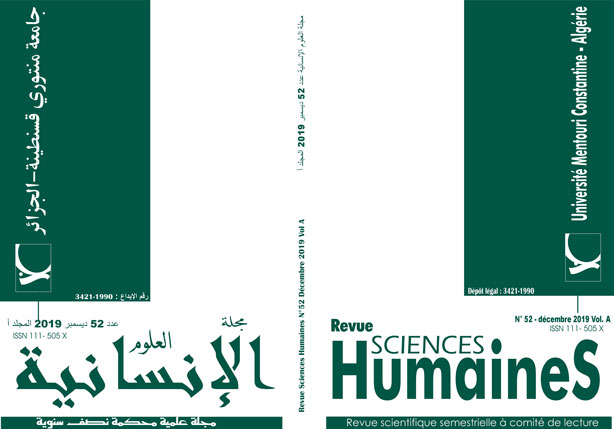The Effect of Combining the Competency Based Approach and the Multiple Intelligences Theory on the Development of EFL Students’ Speaking Skill
Keywords:
Competency based approach, English as a foreign language learning, multiple intelligences theory, speaking skill.Abstract
This paper investigates the extent to which change of teaching style affects students’ achievements, more specifically their development of the speaking skill within a specific academic subject-matter course. The researcher seeks to investigate whether learners’ performance on a specific topical knowledge speaking test will be enhanced if we implement an instructional design that incorporates the principles of the Competency-Based Approach and the Multiple Intelligences Theory. In order to achieve the research objective, a quasi-experiment was implemented at the level of the English department- Larbi Ben M’hidi University. The study was conducted on three intact first-year groups and it went over three phases: pretesting, treatment, and post-testing. The research findings revealed that combining the Competency-Based Approach and the Multiple Intelligences Theory yields better results in students’ development of the speaking skill.
Downloads
References
. Armstrong, T. (2003). The multiple intelligences of reading and writing : making the words come alive. Alexandria, Va: ASCD.
. Burns, R., & Klingstedt, J. L. (1972). Introduction to competency-based education. In R. Burns & J. L. Klingstedt (Eds.), Competency-based education: An introduction (pp. 03-06). Englewood Cliffs, N.J: Educational Technology Publications, Inc.
. Chen, J. Q. (2002). Intelligence : Multiple intelligences. In J. W. Guthrie (Ed.), Encyclopedia of education (2nd ed) (pp. 1198-1201). USA: McMillan Reference.
. Crawley, M. J. (2015). Statistics : an introduction using R. London: John Wiley & Sons, Ltd.
. Farhady, H. 2002. Classroom assessment: A plea for change. Retrieved January 12, 2015 from the World Wide Web: www.aua.am/academics/dep/hf.../ClassroomAssessment.pdf
. Gardner, H. 1983. Frames of mind: The theory of multiple intelligences.New York. Basic Books.
. Gardner, H. 1999. Intelligence reframed: Multiple intelligences for the 21st century.New York. Basic Books.
. Gardner, H. 2003. “Multiple Intelligences after twenty Years”. Retrieved July 23, 2015 from the World Wide Web: http://pzweb.harvard.edu/pis/hg_mi_after_20_years.pdf
. Kerr, A. W., Hall H. K., & Kozub S. A. (2002). Doing statistics with SPSS. Thousand Oaks, California: SAGE Publications, Inc.
. Kincheloe.J.L & Feltman.T. 2007. Howard Gardner, in J. L. Kincheloe & R. A. Horn (Eds). The Praeger handbook of education and psychology. (Vol1) [pp81- 87] USA. Greenwood Publishing Group, Inc.
. Larson-Hall, J. (2010). A guide to doing statistics in second language research using SPSS. New York, NY: Routledge/ Taylor & Francis Group.
. Mason, E.J., & Wilox, K. 2009. Intelligence: An overview, in E. M. Anderman & L. H. Anderman.L.H.(Eds) Psychology of classroom learning: An encyclopedia. [pp 497-505] USA. McMillan Reference.
. McKay, R. 2008. Multiple intelligences, in N. Salkind (Ed), Encyclopedia of educational psychology. Vol2. [pp712-717] USA. SAGE Publications, Inc.
. Nunan, D. (2013). Learner-centered English language education: The selected works of David Nunan. New York, NY: Routledge/ Taylor & Francis Group.
. Seider, S., & Gardner, H. (2009). Multiple intelligences. In E.M. Anderman & L.H. Anderman (Eds.), Psychology of classroom learning: An encyclopedia (pp. 635-638). New York, NY: McMillan Reference USA, a part of Gale, Cengage Learning..
. Spady, W. G. (1994). Competency-based education: A bandwagon in search of a definition. In Deakin University Course Development Centre (Eds.), A collection of readings related to competency-based training (pp. 21-31). Victoria, Australia: Deakin University.
. Tavakoli, H. (2012). A dictionary of research methodology and statistics in applied linguistics. Tehran, Iran: Rahnama Press.
. Tele, S. (2000). Rainbows of intelligence: Exploring how students learn. New York, NY: Skyhorse Publishing.
















